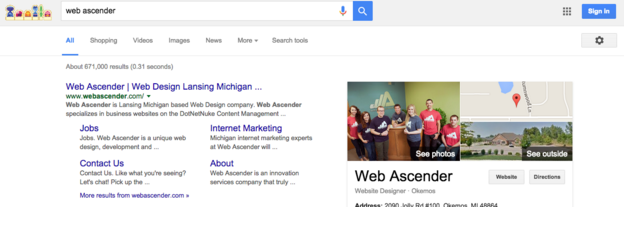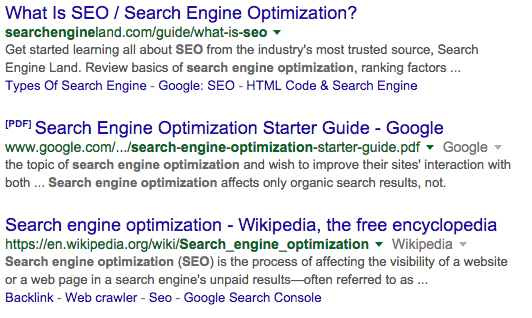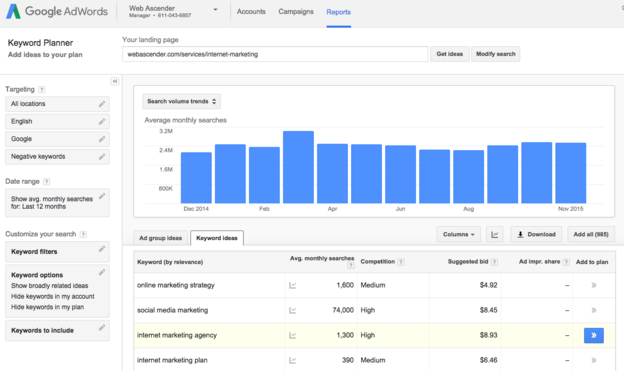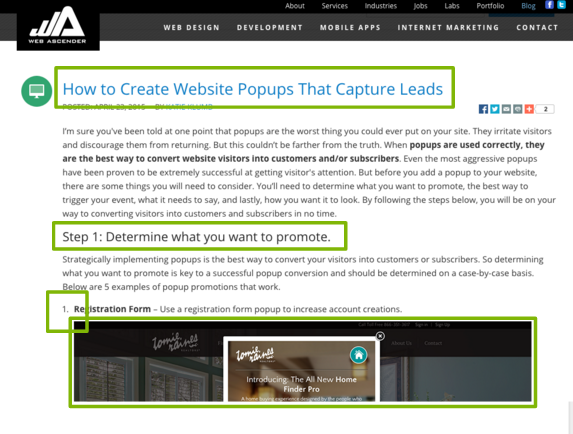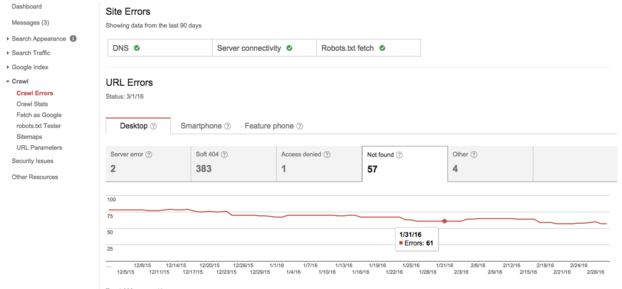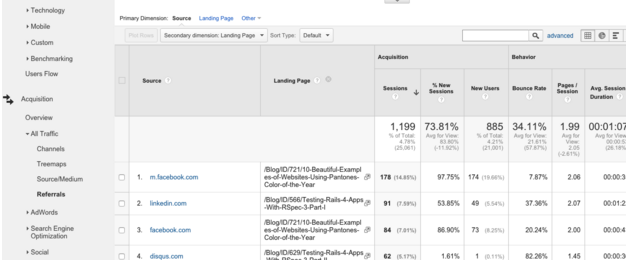
Search engine optimization (SEO) makes your site easy to find when users make a relevant search. One of the biggest factors is the content on your site. In some cases, you may want to improve SEO, but you can’t rewrite a page’s content. The good news is, there are ways to improve your SEO without rewriting your website content. The best SEO methods change as search engines change their algorithms, so we’ve updated this post for SEO best practices in 2022.
How Does SEO Work?
To understand the ways to improve SEO without rewriting your website content, it’s important to first understand the basics of SEO. Search engine optimization (SEO) includes a number of techniques that help a page show up higher when users enter a relevant search query in a search engine. This includes content-related strategies revolving around your text and images, as well as functional strategies revolving around your site’s and pages’ navigability, load speed, and technical organization.
Google is the most-used search engine, processing about 5 billion queries globally every day. Google also invests enormous amounts of time and money into constantly improving their search engine. For these reasons, most SEO experts use Google to test and assess the effectiveness of their SEO strategies and changes. However, SEO strategies that work for Google will generally work for all search engines.
Why is SEO Important?
SEO is critical to digital marketing. If users can’t find your website when they enter a relevant search, or they land on a competitor’s site first, you’re losing customers’ attention and, very likely, their purchases.
In fact, there’s an easy way to put a price tag on your SEO efforts. Businesses can pay for top ad spots that show up above the first results on a search engine results page, or SERP, when users enter certain queries. Some queries are a lot more expensive than others to advertise on, but estimates indicate businesses spend anywhere from $1,000 to $10,000 a month on these ads. That’s $12,000 to $120,000 annually for SMBs, with big businesses spending upwards of $50 million annually. But what does that mean for SEO efforts?
The goal of SEO is to put your pages at the top of the SERP, where they’ll get the most clicks from interested customers. These clicks and visits are considered organic traffic, which is not associated with an ad. Though SEO efforts require time and expertise, the goal is the same as the goal of a paid ad; to attract customers’ attention, get their clicks, and bring them to your site so they will make a purchase. So, with effective SEO and great content, you can get your pages at the top of a search without paying for a spot.
If you’re not already paying for top SERP spots, you can take a look at the average costs in your industry to run some numbers and get a benchmark. While SEO strategies won’t guarantee a top SERP spot like an ad will, unpaid listings are often seen as more valuable and legitimate in a customers’ mind as well. Also, better SEO has positive implications for other parts of your site and your overall digital marketing strategy. By investing even a fraction of your search ad spend into SEO, you can get valuable organic traffic and improve the overall value of your entire site.
14 Ways to Improve SEO Without Rewriting Your Website Content
1. Set title tags on every page
Start out by setting each page’s title tags. Title tags tell search engines and users what a page is about. Your title should be around 60 characters long and it should very briefly sum up the point or purpose of the page. The page’s targeted keyword should also be in the title tag (more on this later).
Title tags have become less important as search engines have developed more effective ways to decipher what a page is about. However, optimizing your title tags can still be a great way to improve SEO without rewriting content.
If you have a WordPress site, I recommend using the Yoast SEO plugin to update your title tags. This will give you a preview of what your page will look like in search results using the title tag you have set, and it also provides some other great SEO recommendations.
2. Optimize for pageviews and click-through rates
While finding the right keywords and context will improve your SEO, there are also engagement metrics to consider. Engagement metrics measure how useful, interesting, or impactful your site is to readers.
Some important engagement metrics include:
- Time on page: When users spend more time on your page, it indicates that the page is useful to them.
- Bounce rate: When users visit one of your pages and then click on another page once they’re on your site, they have stayed, not bounced. Low bounce rates indicate good website and page quality.
- Pageviews: Though certainly not perfect, popularity can be a good measurement of usefulness. If your page is getting more clicks than a result that appears higher than yours, your page will take over that spot before long.
- Click-through rate: If a high percentage of people see your page appearing in search and then click on it, you have a high click-through rate. If your click-through rate is low, your title and description are not describing your page very well.
Creating quality content is one way to improve engagement metrics. However, there are other ways to do this without rewriting your website content. Create compelling page titles, descriptions and calls-to-action that will pull users towards your page. For someone already on your page, another compelling article or blog post will keep them on your site, thus reducing your bounce rate. A gripping page title and description can bring in more organic traffic as well.
Buzzfeed is really great at this. Just take a look at their blog:
You can also update your meta descriptions to include target keywords and a calls-to-action to encourage clicks on your listings.
Here’s another example. Which title are you more likely to click on?
Learn more about tools and strategies for improving and measuring SEO
Download the Ultimate Guide to Increasing Your Google Rankings »
3. Leverage keywords in existing content
In an ideal SEO world, you would complete all of your competitor and keyword research to determine what phrases to target with your website before developing your sitemap and actually writing content. However, this isn’t always possible.
But, including the important keywords somewhere on the page is pretty much a requirement. If you cannot rewrite your website content, instead pick keywords based on the content that you already have.
You can identify these keywords using Google’s Keyword Planner. Using this tool, you can enter the URL of the page you want to optimize, and Google will provide you with a list of keywords and search volumes that it thinks are relevant to your web page. You can use this information when writing your page title tags and descriptions to make sure that thinks the keywords you are targeting are relevant.
4. Format your content properly
Body copy aside, behind-the-scenes factors also influencer your SEO. So, if you can’t change the words on the page, consider changing the way those words are laid out. The right organization shows Google that your content is easy to read and understand. These elements are also important for website accessibility.
Some formatting elements include:
- Formatting headings in the proper order (H1, H2, H3 etc.)
- Numbered or bulleted lists (like this one!)
- Using bold, italics, and underlining to convey meaning, not for emphasis
- Separating paragraphs
5. Get rid of low quality content
Search engines crawl and index web pages all over the internet so they can show the right pages at the right time, in a fraction of a second. This means the robots are constantly crawling the internet, but they only want to collect information that is relevant and valuable to users.
With billions of pages to crawl, these robots might not bother with your site if they find a high number of low-quality pages, or if your pages are buried deep within the architecture of your website.
If you can’t add new content to your website, you can improve your SEO by reducing the number of low-quality pages or pages with duplicate content. This will improve the “crawl bandwidth” of your website, making sure the good content—the content you actually want users to find in search results—gets indexed when a crawler comes to visit.
6. Be intentional about building the right links
While content is important for improving your SEO, off-site SEO factors and link-building are also critical. In recent years, Google has made it clear that expertise, authority and trustworthiness (EAT) are important to rank well. Google uses links as indicators of EAT.
When a website links to yours, think of it as a vote of confidence. The other website is linking to your content because they think it is helpful, informative, and trustworthy. This means that gaining links from other websites can improve your SEO without rewriting your content. The more popular the linking website, the more valuable the link.
Other than the authority of the linking website, you also want to seek out websites that are in your industry or target the same topics as your website. Google will correlate the topic of the linking website with your site as an SEO factor. Both the website itself, as well as the actual text used in the link, are both important.
How do you get these types of links? Some good places to start include becoming a member of industry organizations, sponsoring relevant events, or providing guest blog post content for popular blogs that target your audience.
7. Fix broken backlinks
In addition to seeking out new links, consider the “low hanging fruit;” that is, websites that are linking to pages on your site that don’t exist. Maybe the page they are linking to used to exist, but has since been deleted. Maybe you went through a domain change and the website is linking to your old site, or a typo snuck through.
Here are some ways to find broken links:
- In Google Search Console, go to Crawl > Crawl Errors and select Not Found. Then click on a URL and a popup will appear with the places the missing page is linked from. Go to that page on your site and update the link.
- In Google Analytics, go to Acquisition > All Traffic > Referrals. Add a secondary dimension of “Landing Page” and click through to make sure your referral traffic is landing on actual pages on your site, not a 404.
- Do a search in Google for links:yourolddomain.com to find websites linking to an old domain.
- Find broken links on your own site by using a crawler / site auditor tool such as Raven Tools or Screaming Frog.
8. Build links between pages within your site
We’ve already established that Google cares about links. A lot. But did you know that even links from your own site can impact your SEO? If you can’t change the words on the page of your site, go through the content and link up relevant phrases to their appropriate pages.
For example, if you are a web design company with a page about web design, you might mention on your web design page that you build websites in WordPress. You might also have a page on your site about WordPress development. By linking “Wordpress” on the web design page to the WordPress page, you are telling Google that the WordPress page should rank for the keyword “Wordpress.”
Obviously, be careful not to overdo this. One or two internal links on a page is probably enough, and too many can result in SEO penalties. Create links that provide value to users and they’ll benefit your SEO.
9. Optimize page load speeds
As Google has updated its algorithm, page load speed has become even more of a factor. Google wants to provide searchers with the best experience possible when they land on a page from a search. A page that loads quickly provides a better experience.
Many factors play into your pages’ load speed, like the number and size of your images, the platform your site runs on, plugins and third party tools you are using, and caching settings.
If you’re looking to optimize page load speeds, but don’t know where to start, Google will check your site and give you some pointers. Just head over to Google’s PageSpeed Insights.
10. Ensure a mobile friendly design
Many of the ways we’ve mentioned to improve your SEO apply to your user experience. This one is no exception. Google has updated their algorithm several times to give priority to sites that perform well on mobile devices. If your website is not mobile-friendly, you are making it more difficult to gather visitors and leads, and making it harder for users to find your site.
Wondering if your site is mobile friendly? Google has a tool for that as well.
Mobile-friendly websites are often called responsive websites. If your site isn’t responsive, it may be time for an upgrade.
11. Optimize your NAP listings
“N.A.P.” information includes your organization’s Name, Address and Phone number. This information is typically listed somewhere on your website (i.e. your contact page) and on other sites such as Yelp or Google My Business. NAP listings on websites throughout the internet have SEO value for a number of reasons. They often have to be verified either through a phone call to your business or a postcard sent in the mail. Because of this, they help prove the existence of your business to Google. They also often come with a backlink to your site, which never hurts!
12. Leverage social media
Social media has become an important part of digital marketing, and it can also play a role in improving your SEO. If you can’t implement traditional SEO tactics through optimizing and creating content, social media can help you improve SEO without rewriting content.
You can improve your SEO with social media by sharing content from your website, like blog posts or promotions, and building a following of users to consume and share your content. Utilize social media platforms that make the most sense for your audience, such as LinkedIn for B2B businesses or Instagram for consumer products. On these profiles, be sure to include a link to your website. Take time to build your following and post regularly, and you may be surprised at how cost-effectively you can reach your audience.
13. Get positive ratings, reviews and testimonials
Testimonials and reviews can add credibility to your site, which can improve your SEO. When properly formatted, Google recognizes reviews on your website and may boost your site in some searches. On some occasions, that review will actually show up in search results.
In addition to reviews on your website, reviews on other websites such as Yelp or Facebook can be beneficial as well. Consider developing an internal process for collecting feedback from customers after a purchase or at the end of a project. Not everyone will submit, but even one new review every month or two can have an impact on your rankings and your traffic.
14. Get published or interviewed
A final SEO strategy to improve your SEO without changing your content is another link-building tactic. Maybe you have the ability to create content, but there is something preventing you from publishing that content on your own site. If this is the case, seek out similar sites or blogs that your target audience reads and ask if you can provide them with content in exchange for a link back to your website. The link can boost your authority with Google, helping to increase rankings without the need to touch your website.
Bonus Tips: Improve SEO Faster
If you’re interested in improving your SEO without rewriting your content, you probably have run into at least one of the following obstacles.
Maybe you struggle to produce high-quality content because you don’t have enough staff or resources. In this case, you want to find how to make your current content perform better. Or, you might want to recycle or repurpose your content to improve its reach and visibility.
Other businesses may have an abundance of content, but none which really wins a lot of traffic or conversions. These businesses may wonder how to optimize their content to perform better, but also how to organize the content they have to make it more manageable.
Content Audits and Redirects
If you have a lot of content, but it’s not performing as well as you’d like, a content audit can help you focus your content and boost your traffic. During your content audit, you’ll see which of your pages and posts are performing the best, and you’ll see where you’ve duplicated topics across your site. When you find similar content, see how you can combine these pages and posts to create one, thorough piece with more SEO value. Then, use redirects to point all traffic to the same place. Instead of having traffic scattered across several different parts of your site, you can focus on one page or post. This will increase the likelihood that other sites will link back to this page or post, increasing the SEO value further.
Content Refresh and Repurpose
Maybe you don’t have as much content as you’d like and you struggle to find the time or resources to create it. In this case, repurposing, recycling and refreshing the content you have can help improve SEO without rewriting your content or creating completely new posts or pages.
- Refresh: Take an existing post or page that performs well, add some new content and links, and you can improve the SEO on the page significantly.
- Recycle: If your content is old and it doesn’t make sense to update it, consider how you might incorporate it into a new another page or post, or create different content, like a video or social media post.
- Repurpose: Similar to content recycling, repurposing your content turns it into something else. You might turn a series of blog posts into a downloadable ebook, or take excerpts from an informative web page and turn them into social media posts.
Try these strategies for improving your SEO without rewriting your content, and you may be surprised at what a difference you can make. Improving your user-experience, extending your reach to other websites, and networking with others in your industry can all be helpful strategies.

